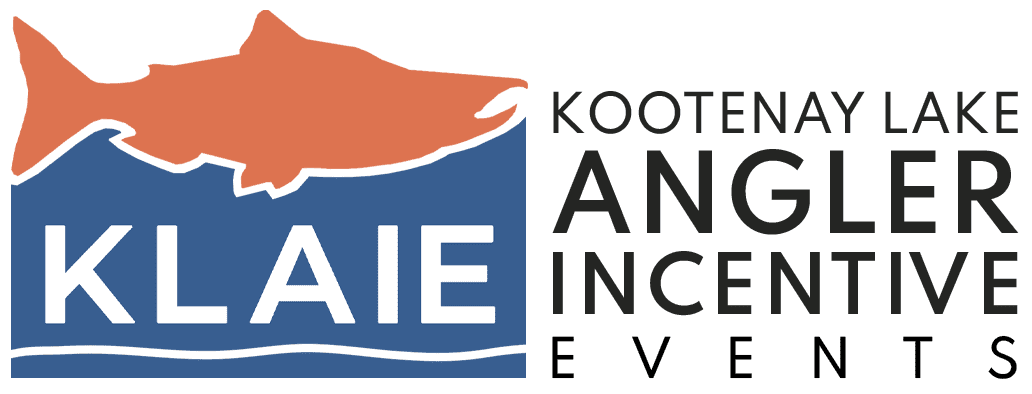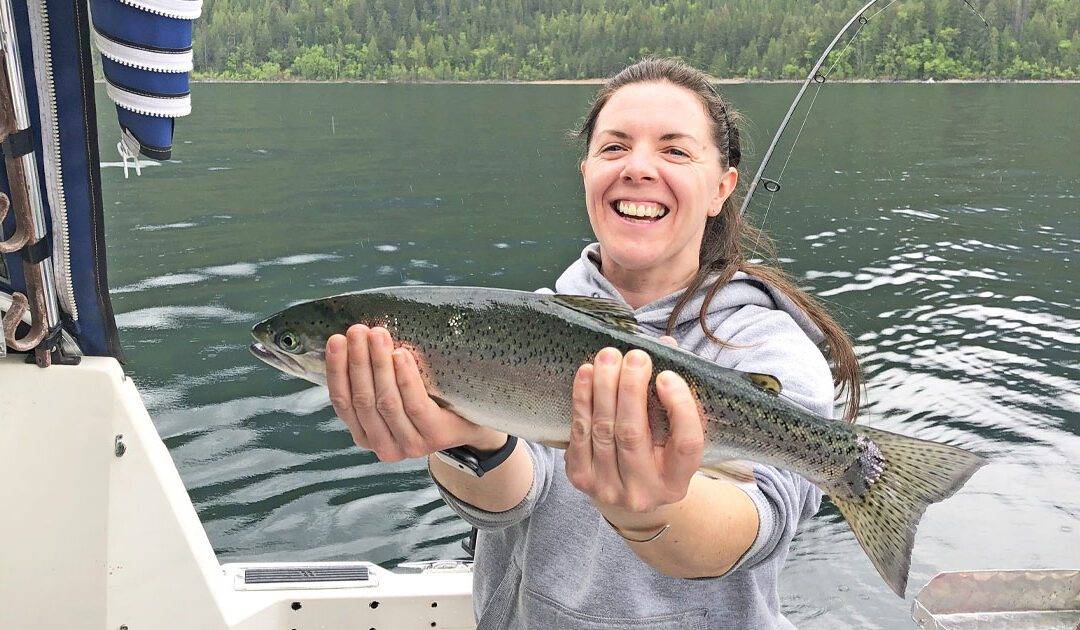The year is 1941.
Wonder Woman makes her first comic book appearance, boxes of Cheerios appear on grocery store shelves for the first time, singers Joan Baez, Neil Diamond and Aaron Neville are born, and an attack on Pearl Harbour by the Japanese Navy changes the course of WWII by drawing the United States more deeply into a historic global battle.
And amidst it all, a fish from Kootenay Lake is introduced south of the border into Idaho’s Lake Pend Oreille. It is the Gerrard Rainbow trout.
Gerrards are a species of Rainbow trout native only to Kootenay Lake and its tributaries. The salmonid coevolved with kokanee, which became a crucial part of their diet and is the reason they can reach record-setting weights — the largest Gerrard caught on Kootenay Lake was 35.5 lbs in 1976.
So it’s no wonder our southern neighbours, after observing an established kokanee salmon population in their own lake in the 1930s, were tempted to see if the Pend Oreille could support such a trophy fishery. And in a short time, it did.
But after decades of successfully attracting and hosting a world-renowned sport fishery, in the early 2000s, things changed in the lake. The kokanee were crashing, hard and fast, and the large Gerrards, who needed the kokanee to grow big, were becoming scarce as well.
Fisheries scientists, anglers and concerned citizens rallied, and after years of research and public meetings, in 2006, a predator supression program was launched.
Significant efforts to reduce Gerrards and Lake trout, including commercial scale netting, were undertaken by the government, while a financial incentive program was marketed to local and visiting anglers. Then, after around six years of government and anglers working together catching trout, the hard work and hundreds of thousands of dollars in funding paid off. The kokanee came back.
The suppression program still continues today, and kokanee populations have increased steadily alongside such efforts. And the large, sought-after Gerrards? They have returned too.
Back in B.C., and up in Kootenay Lake, a somewhat similar story has played out. Beginning around 2014 extremely low numbers of kokanee were observed, with a record low of only 12,000 individuals being reported in 2017, compared to a typical range of 250,000 to 2 million.
Since then, efforts have been made to bring the kokanee back to historic numbers. Millions of kokanee eggs have been placed in the Meadow Creek spawning channel, kokanee fishery closures have been set, fishing regulations have progressively allowed more harvesting of bull trout and Gerrards since 2015, nutrients have been added to the lake to support kokanee production, and starting in 2020, an angler incentive program was introduced.
This is the fourth year angler incentive programs have run in Kootenay Lake, and the kokanee may be coming back.
“Predator diet proportions of kokanee are back to pre-collapse levels, indicating there is a more balanced predator-to-prey ratio,” says fisheries biologist Molly Teather.
Returning angler incentive participant and prize winner, Ed Gudjonson is hopeful as well.
“They’re slowly coming back,” says Gudjonson about Kootenay Lake’s kokanee salmon. “We do see a few more kokanee coming down. You catch the odd one and release and see lots on the fish finder. So it’s slowly turning around, I think.”
Ed Gudjonson runs a farm in Creston and has been fishing in the area with friends and family for 25 years. He has landed a 28-pound, two-ounce Gerrard of his own and has seen things change since he first started fishing in Kootenay Lake.
“You used to see schools of kokanee on top jumping out, and you knew there was a big fish there feeding on them,” Gudjonson recalls.
Gudjonson hopes those days will return. In the meantime, he’ll keep packing his boat full of friends and family, doing his part to catch kokanee predators and maybe pick up a prize or two in the angler incentive events. And he hopes other anglers will do the same.
“Just get a line in the water,” Gudjonson says. “When there’s a hook in the water, there’s hope.”
In addition to the other kokanee recovery efforts underway, the Kootenay Lake Angler Incentive Events are an important piece of the revival puzzle. The 2023 event is being coordinated by Angler’s Atlas and the Ministry of Forests until the end of October, with two long weekend events (Labour Day and Thanksgiving) running in between.
Participants can register online for the 2023 events here and then record their catches by downloading and using a mobile app called MyCatch by Angler’s Atlas, directly from their boat or the shoreline.
After catching and killing a Rainbow or Bull Trout, anglers must take a picture of their fish on a measuring device using the MyCatch app. Once the catch team reviews the dead fish and it meets the rules, it qualifies as an entry and appears on a live leaderboard where anglers can compare their efforts to each other. The more fish caught and documented, the more entries and the better the chance of winning a $3000 prize, $1600, or $900 cash prize at the end of the event.
Additional prizes will be awarded to the participants who catch the longest trout and the most fish caught.
The annual quota of rainbow and bull trout for the main body of Kootenay Lake has now been increased to 20 per year for fish over 50 centimetres.


